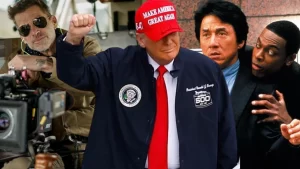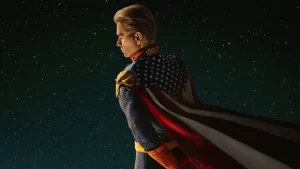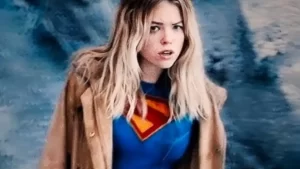If You Can’t Beat Them, Join Them
A Film Review of Get Out
It has been a full year since the cultural phenomenon known as Jordan Peele’s Get Out released in theatres and circumstances kept me from a first wave screening and review. Since its release, this film has received nigh universal praise for not only making the thriller/horror genre relevant again, but for its keen social commentary regarding the state of race, class, power and purpose in today’s American culture. The sheer volume of social media response to this film at the time made me feel that a review weeks or even months after the fact was superfluous. I would get around to seeing it at some point in the future, so I avoided everyone else’s essays and YouTube presentations to prevent spoiling my perspective. That point came and went recently and I was so viscerally affected by this film that I was compelled to review it immediately so as to pay my own respect to such a seminal project.
Get Out is an expertly crafted thriller that is unafraid and unashamed of exposing the core of contemporary American racism with a story rooted in realistic scenarios that devolves into horrific depravity. Conspiracy, paranoia and suspense generate an exquisite amount of entertainment while a clear lesson is being taught to the audience. Racism isn’t perpetuated by overt acts of glorified brutality and social demonstrations of hate as they are merely the net result of a festering malice that most people do not act upon. It is generated by ignorance and enabled by insensitivity in the form of what society has deemed as “harmless” jokes, jabs and commentary. Locker room boys talk said behind closed doors doesn’t mean that an individual will go out and commit a crime, but it is evidence of an ethnic hubris that infects the individual and social subconscious which lays the foundation for seeing other ethnicities as constant opposition if not outright inferior and to be treated as such.
What makes the story of Get Out so compelling is that the production accomplishes its social commentary without the need of a soapbox. This movie doesn’t hit the brakes to tell you that racism is wrong; it shows you. Every scene, every line of dialogue and every frame of action reveals a theme evolving simultaneously with the story’s developing plot. The audience needs to know that nuanced racism is wrong, but the nuanced racism serves a purpose for explaining the action of the characters in the story. Every moment of Get Out has this form of dual messaging and it isn’t too difficult for an audience to pick up on the pattern because the plot is fairly basic. This duality lulls the audience into a false sense of security thanks to the scenario’s familiarity while also sowing the seeds of tension due to an authentic depiction of awkward social interaction. Jordan Peele demonstrates a masterful balance of content, context and structure with his script which is uncommon even amongst veteran Hollywood screenwriters.
What makes Get Out an exceptional film is directly related to its creator’s acceptance of his own limited, filmmaking experience. In terms of cinematic technique, use of light, camera angles, visual effects and capturing action, Get Out is not setting the world on fire. Keeping the film anchored to a standard, dramatic visual style allows the film to clearly communicate to the audience without the potential distractions that a more experimental style may produce. Peele relies on maximizing the basics: set the scene, fill the frame and point the camera at what you want the audience to see. Observation by the audience is the key and while static shots and minimal action may not be the most visually dynamic, the imagery is still effective thanks to 3 key factors: dialogue, performance and close-ups (in that order). I’ve already stated how Peele’s script is exceptional, but it requires an equally exceptional cast to bring life to words and almost every actor is fully committed to both character and scene throughout this film. Peele takes further advantage of his excellent cast by frequently using close-ups to get the audience as intimately connected to the characters as often as possible. We need to feel what they feel. We need to get into their heads. This is what Get Out is all about on so many levels.
|
Action Style |
There is minimal action of any variety throughout this film and the lack thereof further decelerates an already methodical pace. We eventually get treated to some combat, but it is fairly bare bones. |
2/6 |
|
Action Frame |
Be prepared for a healthy dose of static shots. The one advantage this static framing has is that it commands the audience to observe the scene as one would a painting in a museum. The motive and effects for this framing may be more practical than artistic, but they are effective. |
3/5 |
|
Lead Performance |
Daniel Kaluuya will be a force in Hollywood so long as his roles expand beyond character acting. That being said, his ability to emote via facial expression is incredible and Get Out’s numerous close-ups allows the audience a perfect view to read into his character, Chris beyond what he says. Allison Williams’ depiction of Rose is equally compelling, but what sets her performance apart is her ability to shift demeanor on command as if she creates an entirely new character when the story calls for it. |
6/6 |
|
Supporting Performance |
Catherine Keener, Stephen Root and Bradley Whitford deliver the presence and experience one expects from Hollywood veterans while Marcus Henderson, Betty Gabriel and Lakeith Stanfield deliver great charisma, energy and ability to shift status. Lil Rel Howery provides adequate comic relief who sometimes comes off as too distracting. Caleb Landry Jones was a miss for me as he all but telegraphs his character’s intentions by simply being there. |
4/5 |
|
Music |
Music compliments the emotional tone within scenes in an appropriate manner. However, its average composition and less than memorable melodies fade to the background in almost every moment. |
3/6 |
|
Sound F/X |
Sound doesn’t play a significant role in the entire film save for the one key plot device that is quite effective when engaged which proves how effective the simple recording of crisp, clean Foley art can be in film. |
3/5 |
“Moving” = 21/33
|
Digital F/X |
Visual effects are almost as minimal as the action in this film, but they are effective enough especially when depicting the internal effect taking place within Chris Washington’s character. |
3/6 |
|
Special F/X |
You can always count on the horror/thriller to deliver the practical gore effects we just don’t get from the big budget boys and girls. Not sure how I felt about remixing the ad hoc brain surgery effects from Hannibal in this film. |
4/5 |
|
Costumes |
Casual, mall attire is a very minimal approach to dressing your cast which would be fine if there were a sharper contrast with say, the depiction of the wealthy people in this film. Props and scenery set them apart, not their clothes. |
3/6 |
|
Hair & Makeup |
There really isn’t anything special beyond wigs going on here. |
2/5 |
|
Exteriors |
Location scouts simply outdid themselves by finding the mansion and the surrounding environment where the most of the story unfolds. Luxury and isolation are portrayed quite well. |
5/6 |
|
Interiors |
Sets are very well dressed depicting a nice contrast between the wealthy and middle class young professional, although I would have liked to see more risks being taken with the style and composition of the basement interiors of the mansion. |
4/5 |
“Picture” = 21/33
|
Hook |
Meeting the parents for the first time without them knowing the protagonist sets an effective and relatable trap for the audience to be caught in once the weirdness commences even if this setup has been done before. |
3/4 |
|
Conflict |
So much to unpack here which begins with the obvious racial clashing which is made more intriguing by the themes supporting the external conflict. Larger themes embody the very characters that stand in opposition to each other in this film exceptionally well. This is just about as perfect as synergizing theme gets. |
4/4 |
|
Resolution |
There’s a satisfying cathartic release of vengeance that almost gets taken away by a last second twist that initially fools the audience which wraps everything up quite nicely without need for further denoumant. |
4/4 |
|
Dialogue |
Simple, natural, dramatic, but above all the dialogue is efficient! Just like the imagery, no dialogue among characters is wasted and we never get moments where the film gets too talky even during lengthier dialogue sequences. |
6/6 |
|
Exposition |
Horror/thriller films aren’t particularly interested in world building because mystery is vital to keeping the protagonist and the audience on edge due to an unknown, mysterious threat. There is a moment in this film’s third act where the master plan is spoon fed to the audience and it’s the least compelling moment of the movie because it connects all the dots with no resistance and minimal effort. |
2/5 |
|
Character Uniqueness |
The only real problem with creating a plausible scenario with such authentic characters is that everything is veiled in commonality. Rose’s character stands out a tad in regards to her general creep factor, but every antagonist plays out in all too familiar ways. |
3/6 |
|
Character Relatability |
What makes Chris so relatable is that you don’t have to be a target of racism to appreciate his situation. Chris being isolated as an outsider, as someone not with the in-crowd is the kind of clique culture introduced to us all around high school and it never really leaves us. Just about everyone can identify with not being accepted for every reason under the sun even if “acceptance” isn’t something we are actively seeking. Also, we all know the class clown, conspiracy theorist friend that Rod is to Chris. |
5/5 |
“Story” = 27/34
Overall MPS Rating: 69/100
Get Out is an excellent cinematic adventure that feels dangerous due to the layers of realism in the scenario. It also happens to be dangerous for the status quo because it so effectively identifies authentic and common examples of some of humanity’s greatest social deficiencies. Jordan Peele knows that one of the most effective methods of teaching is entertaining, but he also knows that the concept of race in America is a hot button issue where various demographics are eager to tune out the moment any discomfort enters the social dialogue. Get Out keeps the audience engaged because we become vested in the protagonist’s journey less so for who he is, but rather for all the obstacles set against him. This “underdog affiliation” is a classic storytelling technique that allows an audience to bypass identification and go straight to projection.
Perhaps this is the true genius of Get Out? Chris’ ethnicity is a key factor to the audience in the beginning of the film and not a particularly big deal for every other character in the first act. However, as the film progresses this phenomena reverses as his ethnicity is revealed as the fundamental motive of his antagonists and his seemingly insurmountable struggle transforms him into the everyman for the audience. There is far too much intelligence on display in this film to be missed by anyone seeking a deep, meaningful story.







